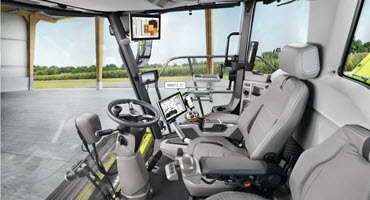Ohio DOT Campaign Shines a Light on Danger to Roadside Employee Lives
To get the word out about the state's new “Move Over, Slow Down” law, the DOT is releasing short videos of employees to humanize...

Instead of wagging a finger at irresponsible driving, the Ohio DOT has chosen to tell the real stories of their staff members' lives to have a stronger emotional impact.
The new “Move Over, Slow Down” law in Ohio legally requires drivers to do just that – move over and slow down for any stationary vehicle with flashing lights on the side of the road. To help emphasize the importance of safe driving for DOT employees, the department is telling their stories through short videos to humanize the potential danger to roadside workers.
Research done by ODOT, says David Rose, chief communications officer at the Ohio DOT, indicted that showing the workers themselves instead of simply telling people what to do would have a stronger effect. As he puts it: you have to connect emotion with people if you're going to change behavior.
“The government is very good at saying, ‘Don't do this and don't do that,’” he says. “And that never works, right? So, what we did with this campaign is, we really wanted to humanize us. We show a real Highway State Patrol trooper. She was awesome, and her kids are in the video as well.
“One of our highway workers was featured as well. And in the radio ads, we have a towing worker doing the voiceover. So, these are people, this is their job.”
Other featured employees in these 30-second videos include roadside workers and a City of Columbus firefighter. Rose says this is the first time the department has internally produced a public awareness campaign on this scale without a marketing firm or videographer.
One reason the department put so much effort into the campaign is that accidents involving ODOT employees and equipment have risen notably compared to last year.
“Why we decided to go this direction was, since January 1, 52 ODOT crews and equipment have been struck,” says Rose. “Compare that to all last year – we had 56.”
There were already extra dollars on hand, says Rose, since the department was also running a “Phones Down” campaign to inform drivers about a new law that came into effect last year outlawing both the use of cell phones and even holding them while driving. The decision was made to put together a program about protecting not just roadside workers but the drivers themselves.
“We’ve got to protect our people, and not just our people: law enforcement, fire, towing anyone that works on the side of the road,” Rose says. “So that was the strategy. Also, unfortunately, people don't realize that if you're hitting a big plow truck or a mower, most of the time, the drivers are injured, not our workers.
“Now we definitely have had some pretty bad injuries and unfortunately fatalities in the past, but already 52 times [workers and equipment have been hit] compared to 56 all of last year. That was a reason to go all in.”
Understanding & Addressing the Problem
Though the campaign is only a few months old, Rose says they’ve seen a notable decline in DOT personnel and equipment being struck, during the time of year when those collisions are most common.
“We've only had two [collisions] in the last two months since the campaign started,” Rose says. “Now, do we make that correlation? The wild thing is, we are in the height of maintenance and construction season. So, we should be getting hit more now than ever, because our crews are out there even more right now than they ever are.”
One possible reason for the rising number of collisions so far in 2024, Rose says, could be that statistically, drivers have been speeding up since the COVID-19 pandemic. Other than that, drivers are usually either distracted or impatient in work zones.
“There’s usually several factors at play,” he says. “One thing that we saw during COVID, traffic reduced, and people were just speeding. I know that the Highway Patrol, they have pulled over more people going 20 plus miles an hour over the speed since COVID. And for those clocked at 100 miles per hour or more, it’s also the greatest number they've ever had.
“It's a combination of speeding and just being distracted. Those certainly are the two big causes. And then other things too – like in work zones, following too closely. If you’re riding someone's tail, say it's a larger vehicle, and maybe you can't see in front of you. And you go to make a move, and you don't realize that lane is closed up ahead.”

 machineryasia
machineryasia 





